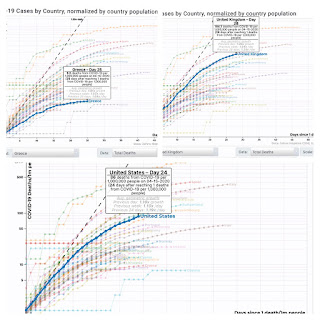Some environmentalists have been seeing a silver lining in the Covid-19 pandemic, viewing it as a potential inflection point marking when the world might turn away from fossil-fuel powered transport. With the spread of the disease worldwide, freeways and city streets became empty of traffic almost overnight and many airlines cancelled most of their flights and went on to life support. Not surprisingly as demand for oil plummeted, so did its price, although this was also due to Saudi Arabia drastically increasing its production to spite Russia over Russia’s prior refusal to come to an agreement to cut production.
At the same time bicycle stores (viewed as essential businesses in UK, where Boris Johnson is a cyclist) saw a huge increase in sales, and also cities started to announce large-scale restructuring of urban streets to make life more friendly to pedestrians and cyclists. Milan, an early victim of Covid, was also a leader in this, announcing plans to restructure its urban landscape. Its ‘Strade Aperte’ plan pledged to restrict automobile traffic on 35 km. of city streets, and to install new bike lanes and wider sidewalks. Furthermore Milan plans to do this quickly - over this summer.
Other cities have followed suit - in Oakland, California almost 10% of roadways have been closed to through-traffic; in Bogota, Colombia, 47 miles of temporary bike lanes have been opened. New York has begun trialing seven miles of "open streets" to ease crowding in parks, with Auckland, Mexico City and Quito among the dozens of other world cities experimenting with similar measures. Here in Victoria the city council is considering plans to limit vehicular traffic on some streets during the summer to allow restaurants to expand seating space into them, so that they can more easily accommodate social distancing.
None of this looks very promising for the automobile industry. Indeed with the onset of the pandemic auto manufacturers saw their share prices plummet. In a very short period of time, the Dow Jones Auto Manufacturers’ Share Index plunged from 304 to below 134. True other share prices saw similarly large drops. But to some it did seem like the writing was on the wall for the auto industry.
But wait! Since the low on March 19, the index has progressed steadily upward and now stands at 252. So not everyone believes that there is no future for the traditional automobile.
Doug Saunders, Globe & Mail columnist now resident in Berlin, had an interesting article on Saturday, offering a very plausible explanation for this.
His argument is that Covid has to a large extent been a phenomenon of the suburbs. He cites Paris and Stockholm, where the urbanites living close to the centre have been largely unaffected, while the suburbanites living far out have been badly hit. And in New York, perhaps the worst hit city anywhere in the world, people in Manhattan have largely escaped, while those living in Queens or Long Island and other outlying suburbs, have suffered greatly. This is especially true of poorer suburbs - think of the banlieus around Paris or the Bronx in New York.
Apart from being home to many poorer people, often immigrants, the other thing these suburbs have in common is that many residents rely on public transit, often in long commutes into the city. And the close contact that is forced upon people in crowded trains and buses is likely one reason that the suburbs are suffering so badly.
Now as the first wave seems to be receding in many areas, and an opening up and return to work is beginning, people in these neighbourhoods are having to make some difficult decisions. Do they carry on as before taking risky public transit, often with much longer journey times due to attempts at social distancing, or do they do everything they can, likely going into debt, to obtain transport of their own? It’s a choice not unlike that facing society as a whole - how much debt and economic pain are we prepared to endure to reduce the risk of infection. Doug Saunders and presumably many in the auto industry, foresee many choosing the option of buying their own car. Saunders quotes Volkswagen’s U.S. chief executive Scott Keogh
“We definitely do see a return to what I’ll call personal transportation and trust.” Cars, he said, are being pitched as sources of public safety.
So the auto industry may soon move into a new phase. For the last decade or two it has been all about trucks, SUVs etc. Now they may see a boom in low cost passenger vehicles.
If this does happen it will reverse what cities and urban planners have long been trying to achieve - to get people out of their own (low occupancy) cars and on to public transport. It doesn’t bode well for air quality, congestion and the general livability of our cities. It threatens to be yet another casualty of the novel Coronavirus. But if you faced the choice of intermittent public transit with a high risk of Covid infection or a lengthy commute on a congested freeway, but in the relative safety of your own car, which would you choose?




